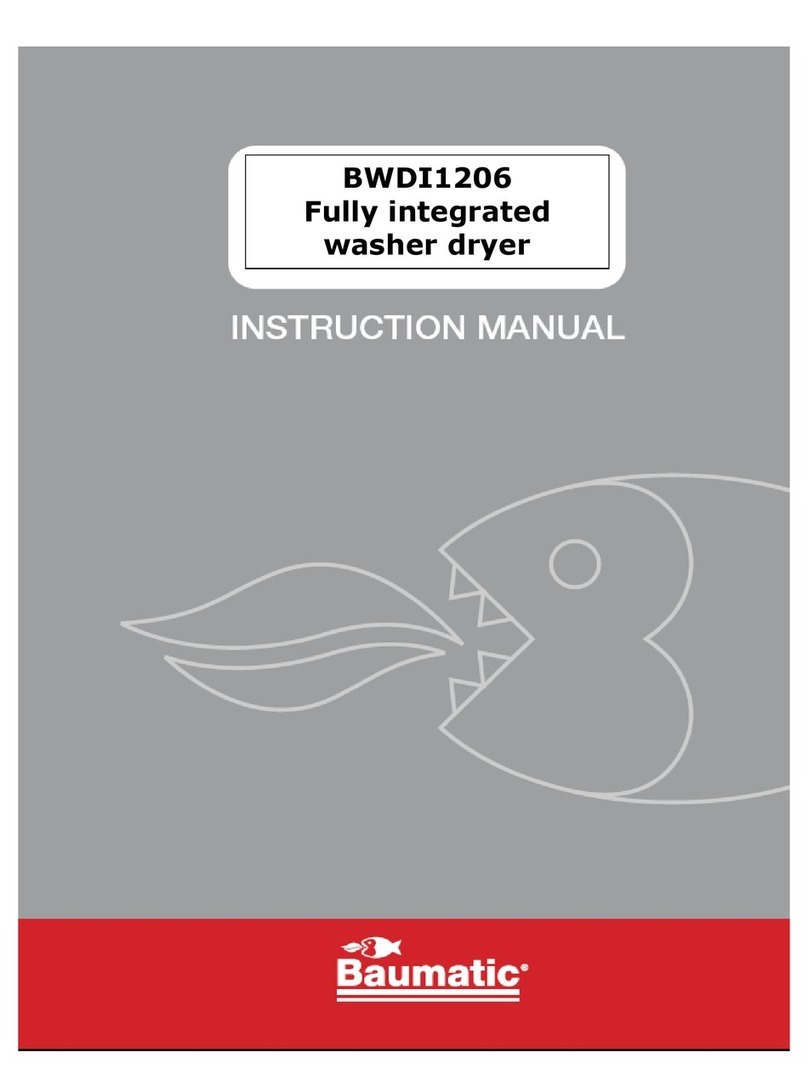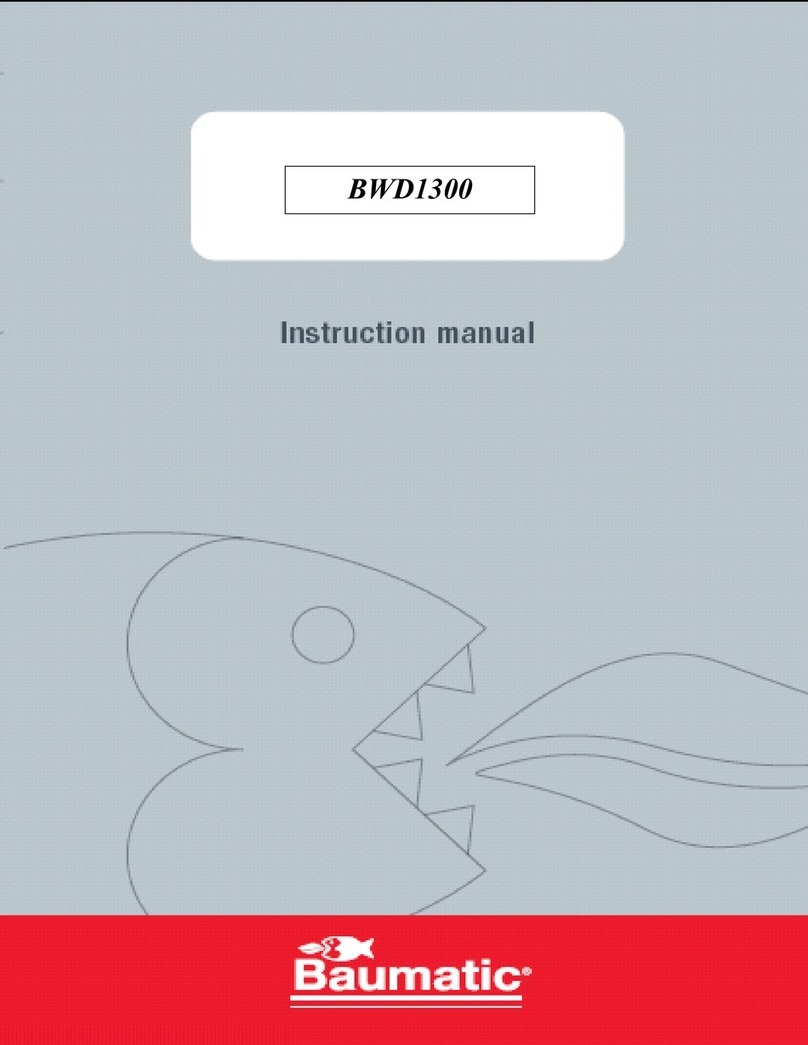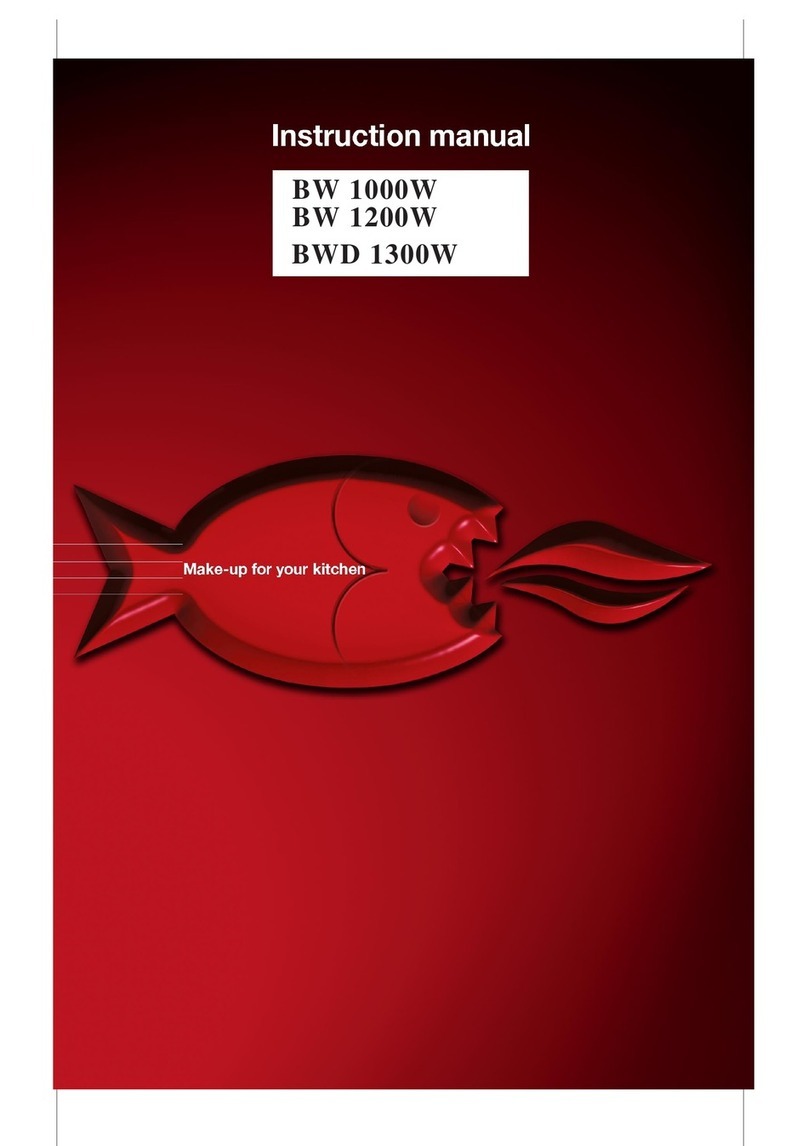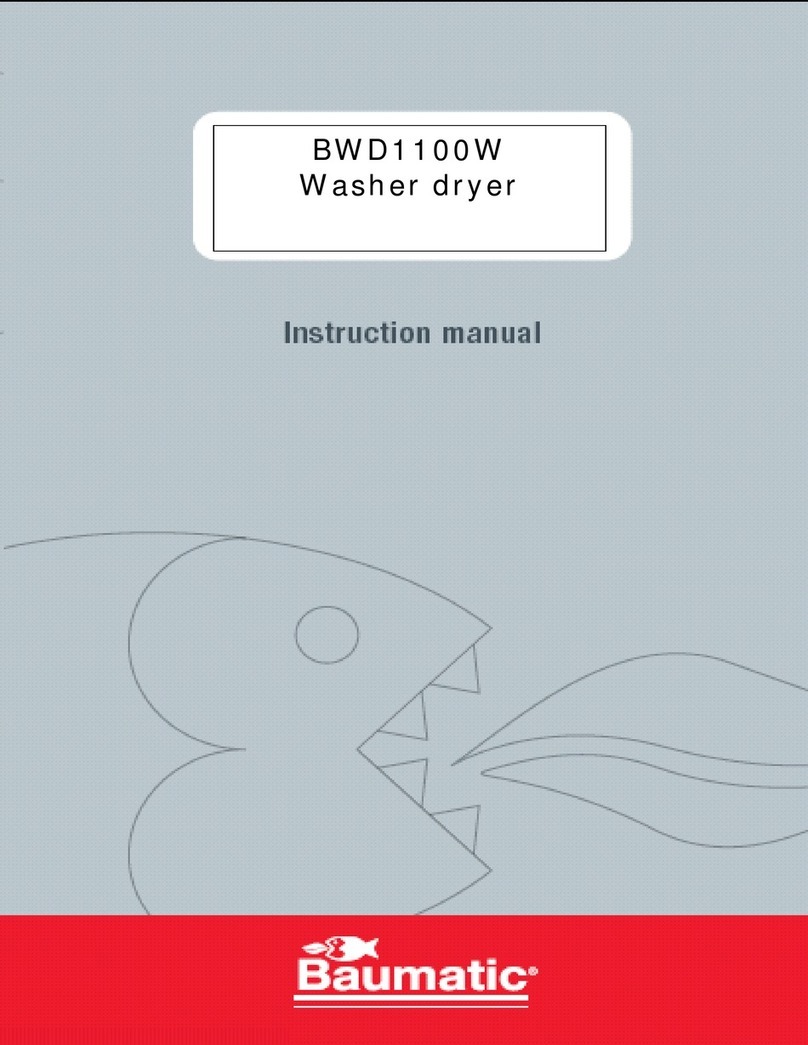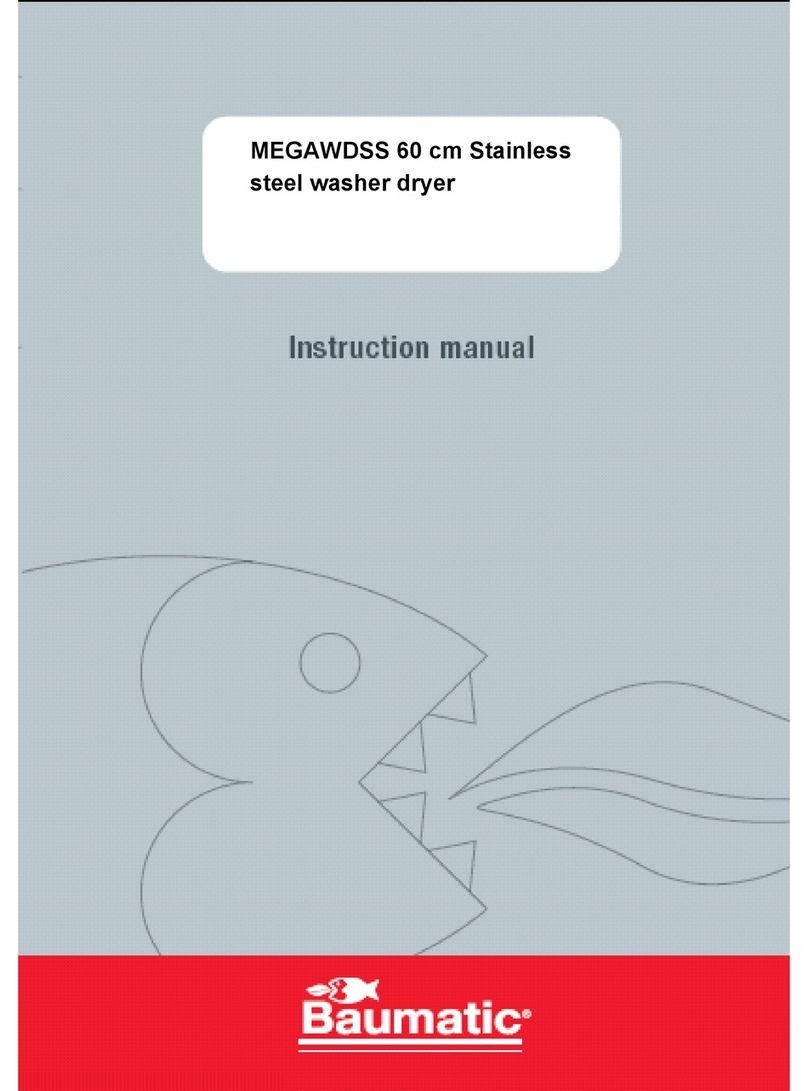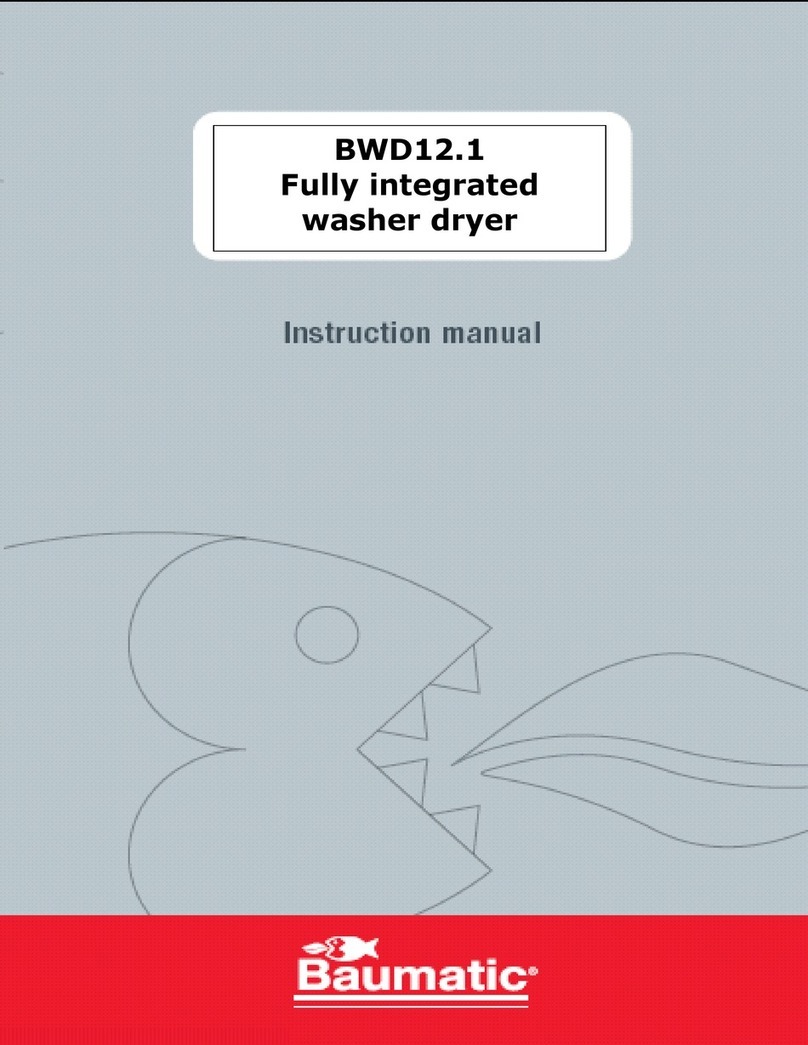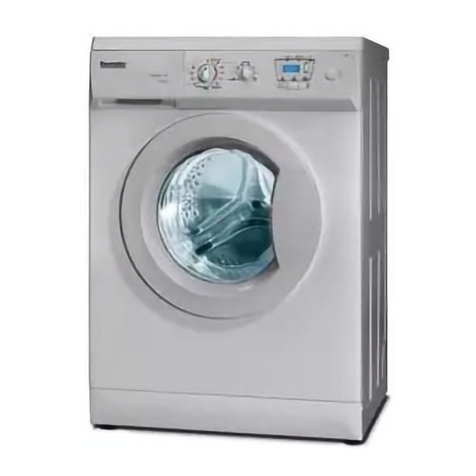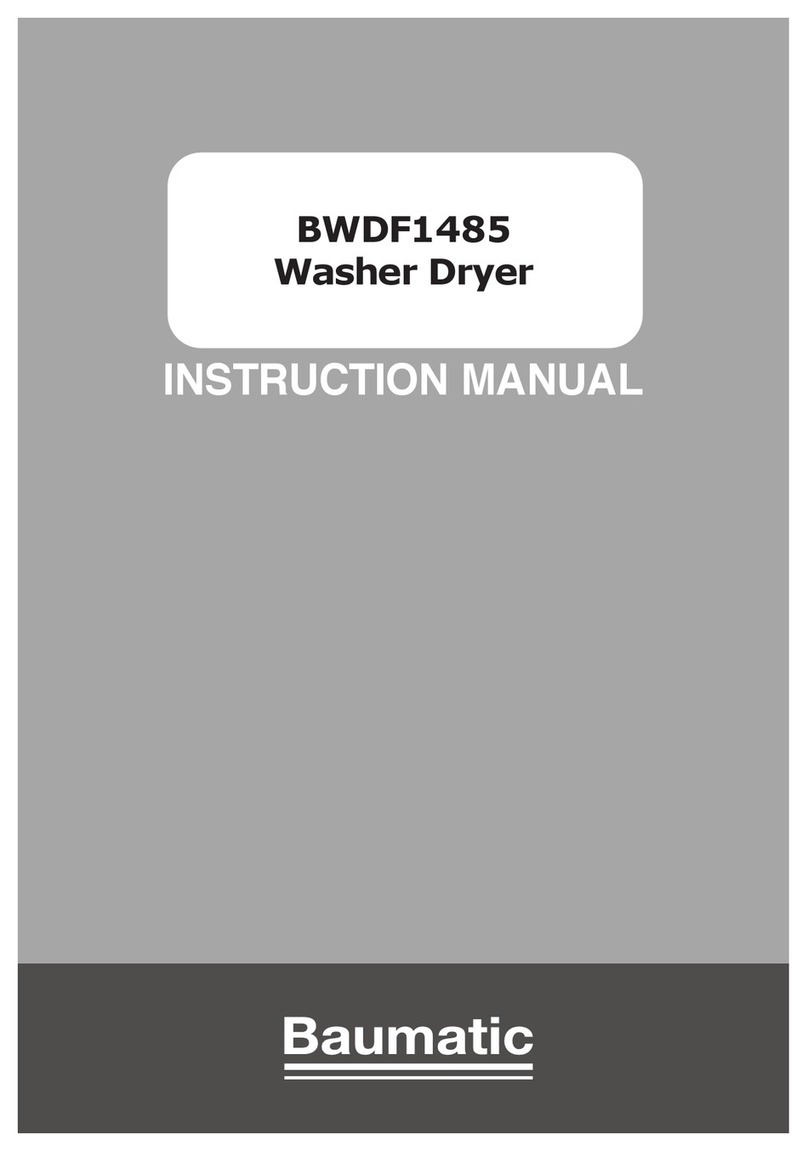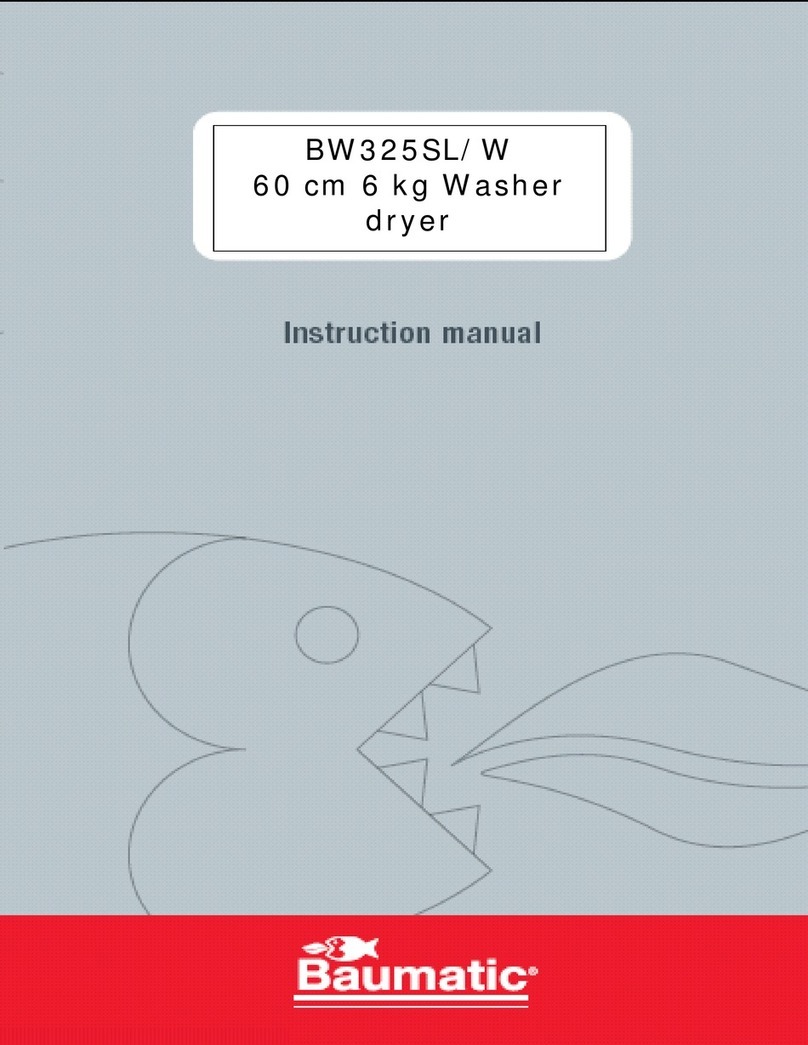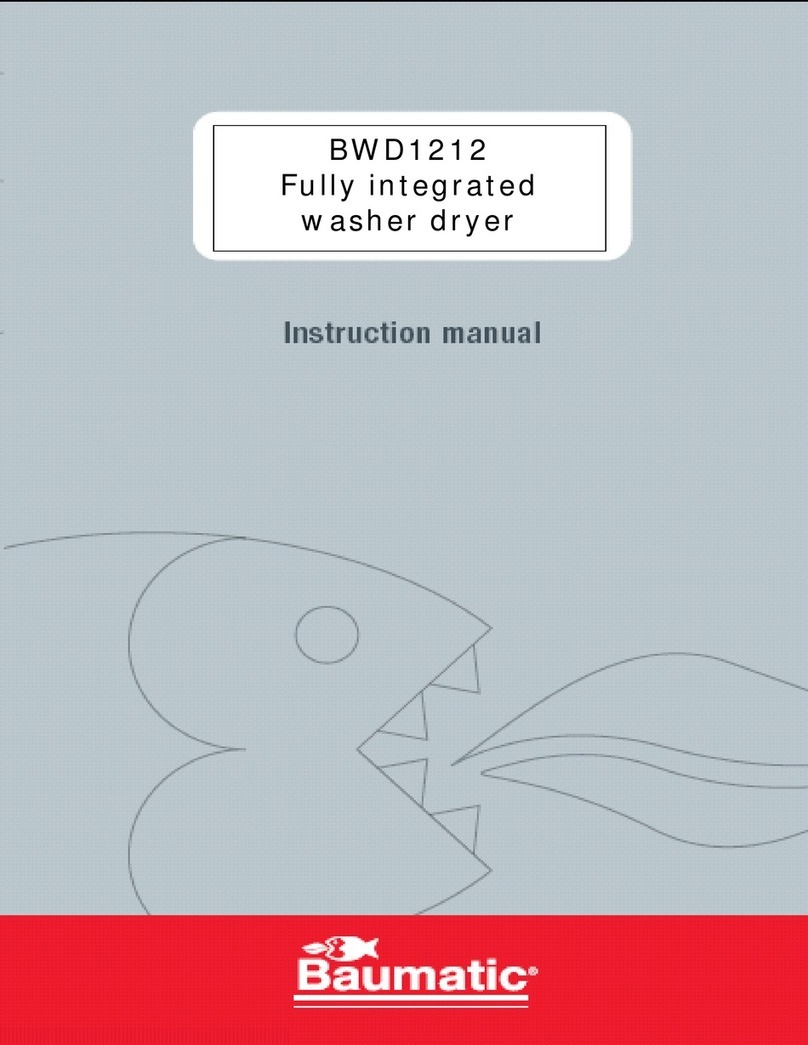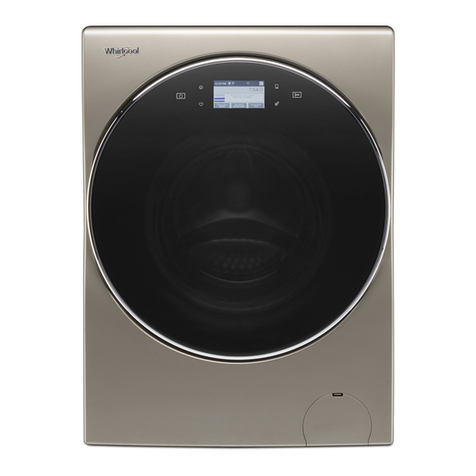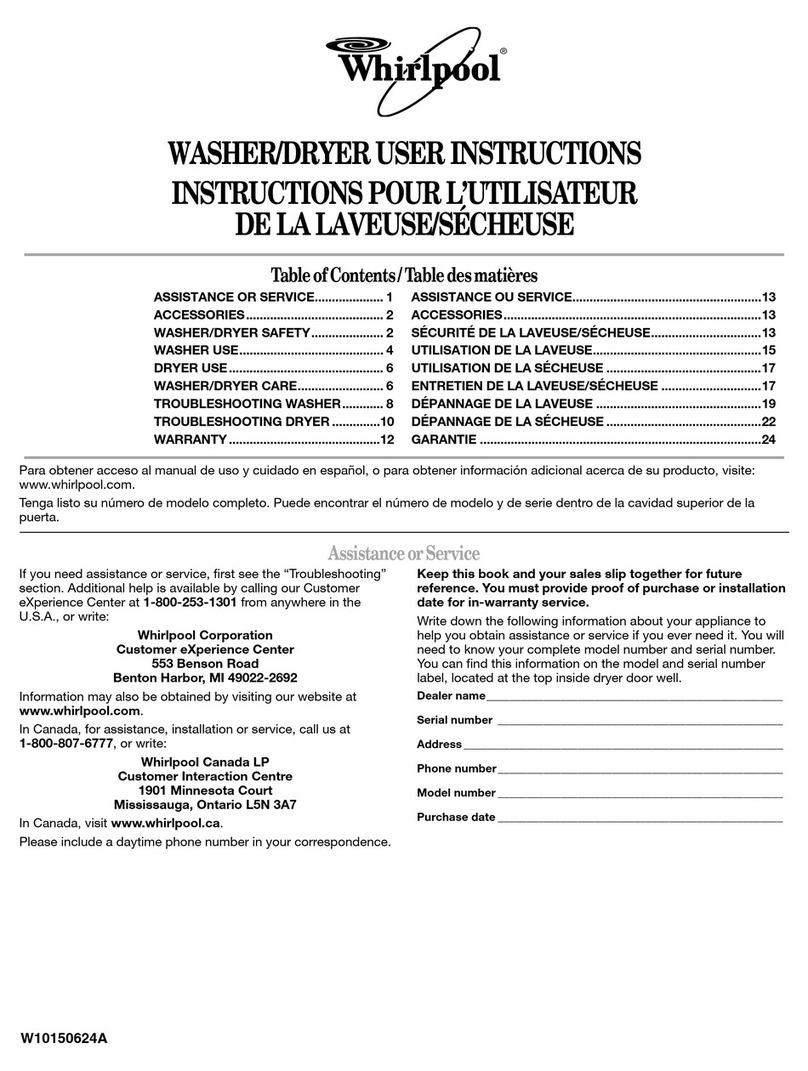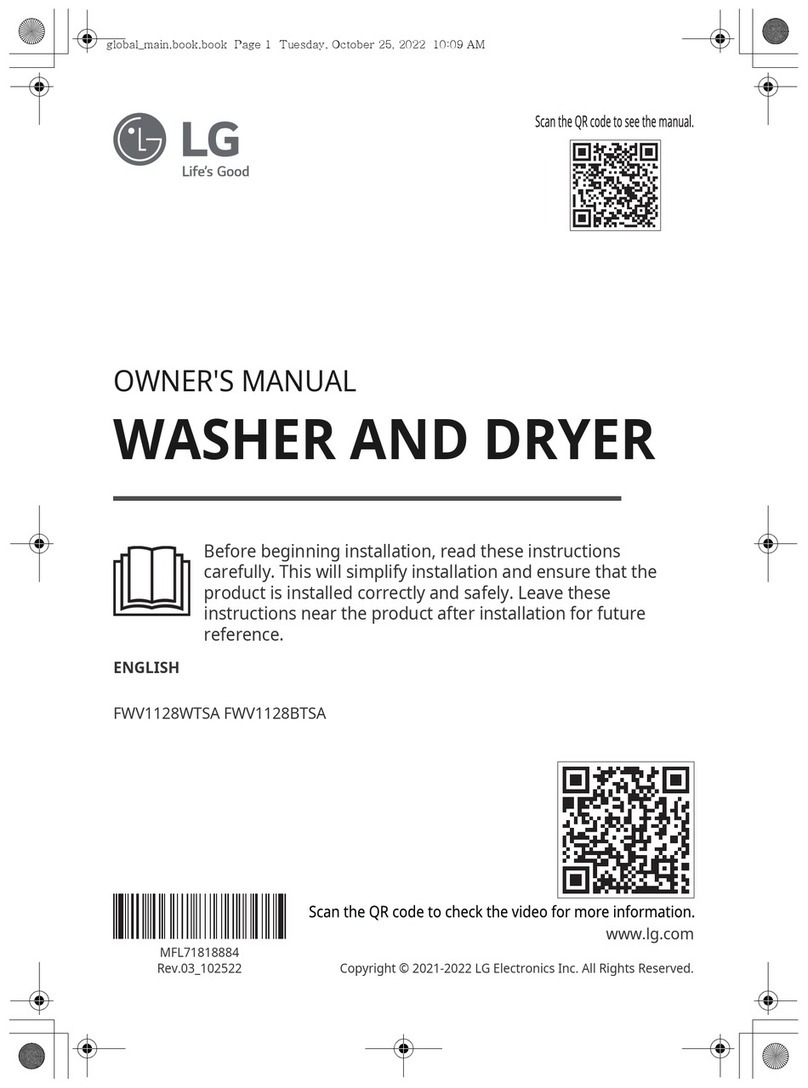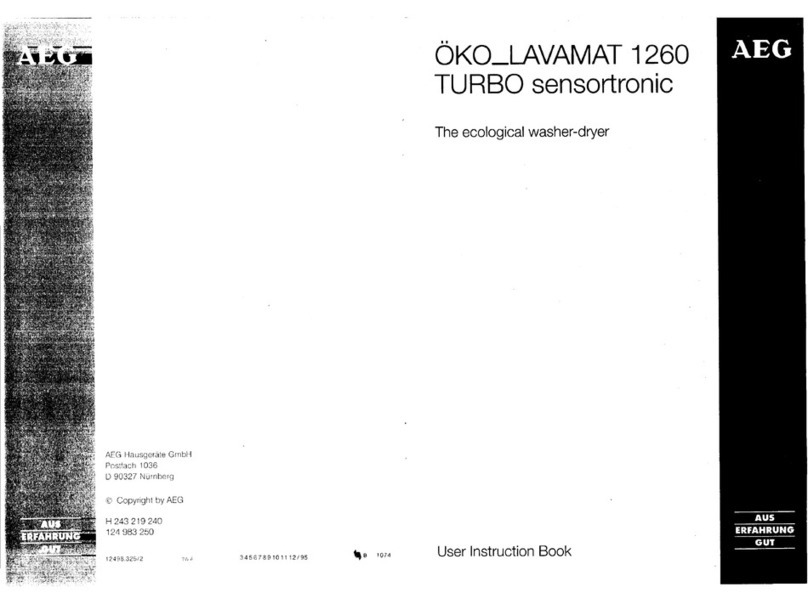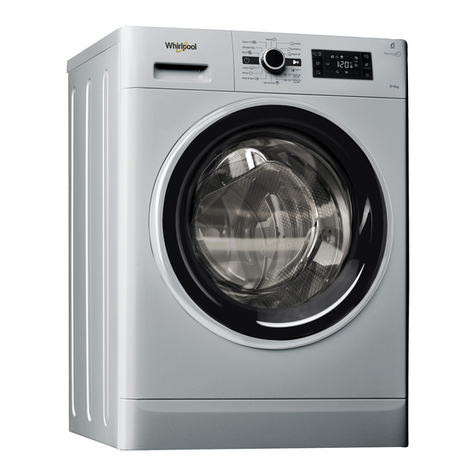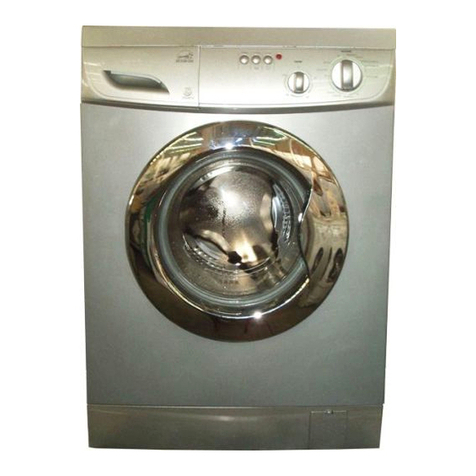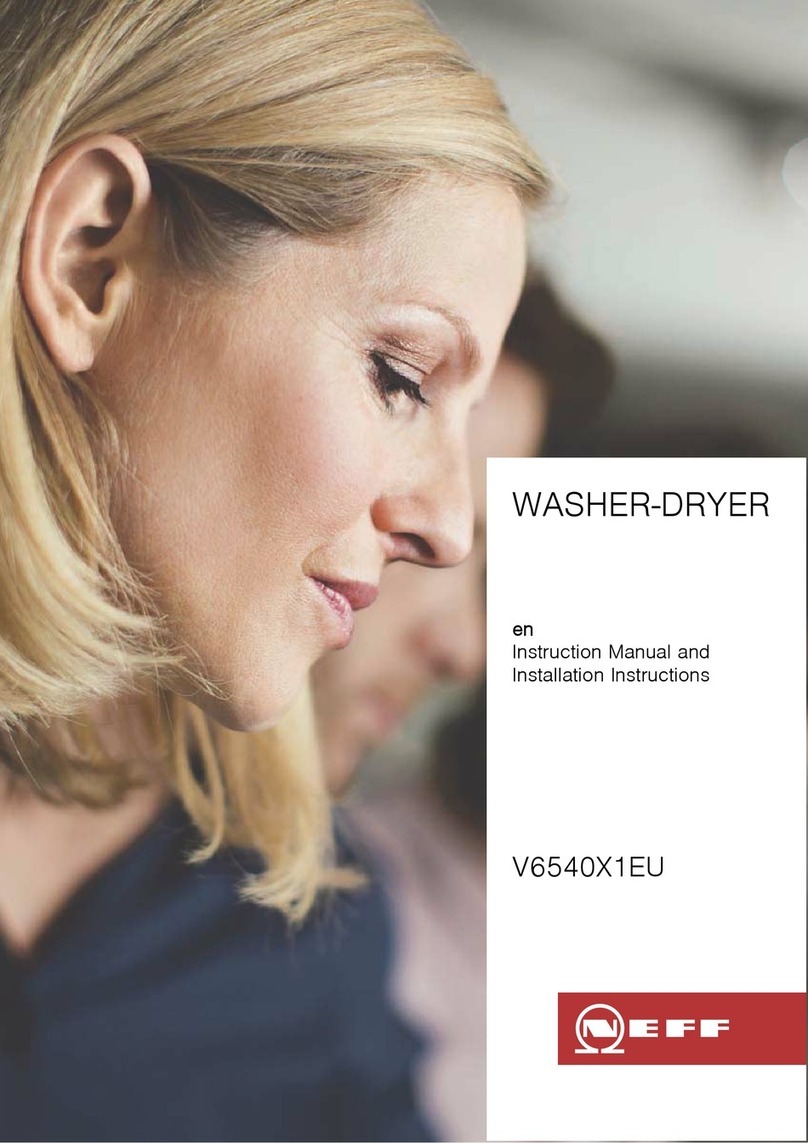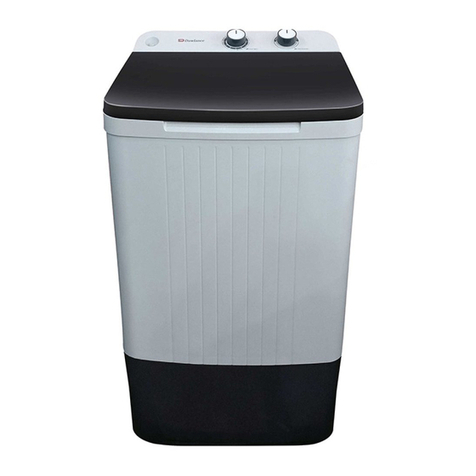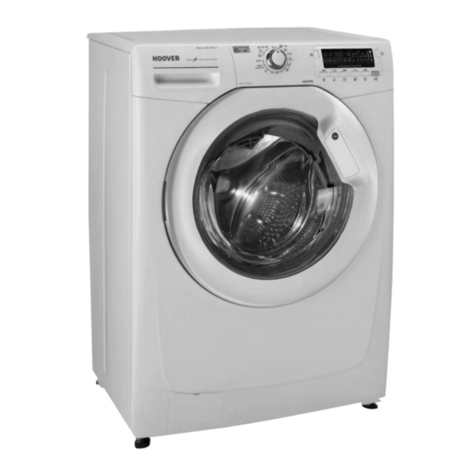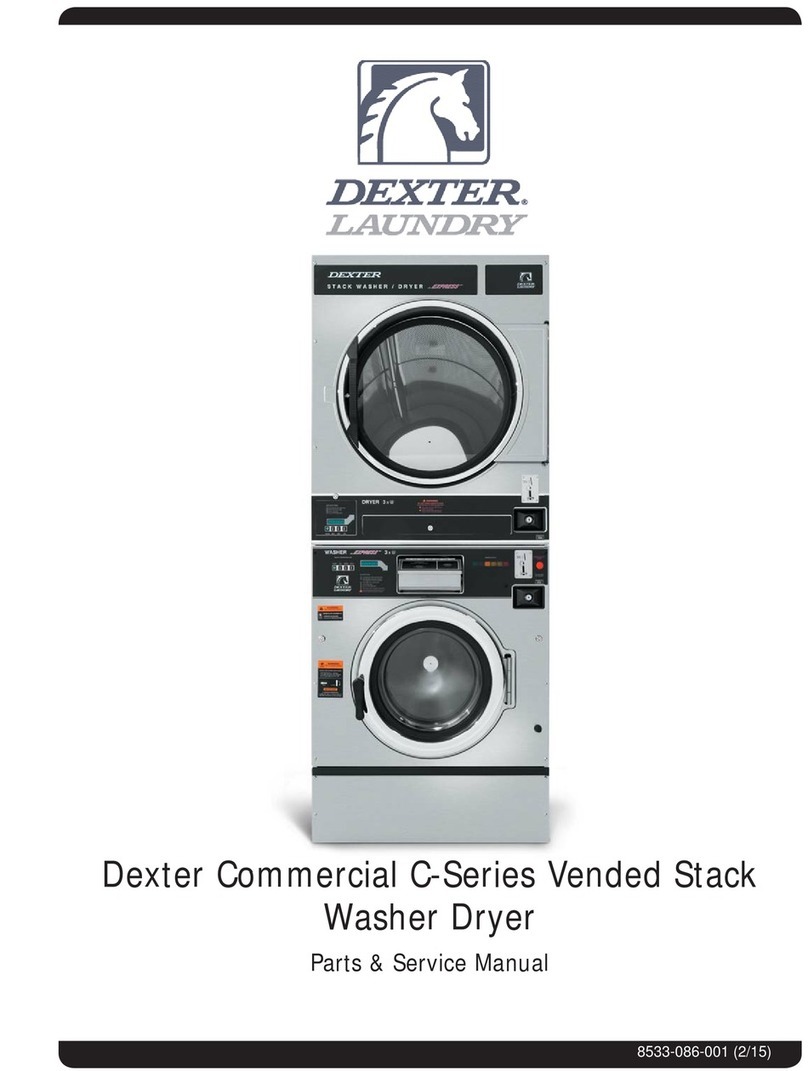
6
oBefore the first use of the appliance, we advise that a 90
°C cotton wash is completed. No garments should be
placed inside the machine; however a small amount of
detergent must be used.
During Use
oIt is recommended that the appliance is unplugged and the
water supply is turned off after the machine is used.
oThis appliance is only designed to wash normal domestic
washloads. If you use your washing machine in any other way or
it is incorrectly used, then Baumatic accepts no liability for any
damage that might be caused and any guarantee will be void.
oNo attempt should be made to alter or modify the specifications
of this appliance.
oThe detergents that you place in this appliance should be
suitable for automatic washing machines. With regards to dosage
levels, the detergent manufacturer’s recommendations should be
followed.
oYou should not wash garments that have been in contact with
flammable materials.
oYour washing machine should not be used for dry cleaning.
oIf you use either dyes or bleaching agents inside this machine,
then you should consult with the manufacturer of these products
to make sure they are suitable for use in your washing machine.
Baumatic cannot be held responsible for any damage that may
result.
Child Safety
oYour washing machine should only be used by adults. You should
not allow children in the area of the machine unsupervised. You
should not let them touch the controls or play with the appliance.
oIt could be possible for a child or pet to gain access to the
washing machine through the porthole door. Therefore please
check the drum before using the appliance.
oAny packaging that is removed from the machine should be kept
away from children.
oAll detergents should be kept out of children’s reach in a safe
place.
